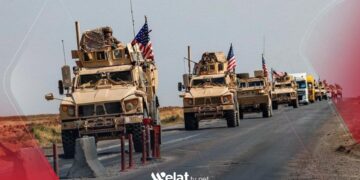Iran’s Water Crisis Worsened By Taliban Dam: A Looming Humanitarian Challenge
As Iran grapples with one of the most severe water crises in its history, the situation has been exacerbated by the recent construction of a contentious dam by the Taliban in Afghanistan. This development, which threatens to diminish critical river flows into Iran, highlights not only the delicate balance of regional water cooperation but also the potential for escalating tensions between the two nations. As drought conditions and mismanagement have already strained Iran’s water resources, experts warn that the Taliban’s actions could push an already precarious situation closer to disaster. Amid rising concerns from communities reliant on transboundary water sources, the implications of this dam extend beyond mere environmental challenges, posing significant risks to the humanitarian landscape of a nation in crisis. This article delves into the multifaceted ramifications of the Taliban’s dam on Iran’s water supply, exploring both the immediate impacts and the broader geopolitical context of this escalating crisis.
Iran’s Water Scarcity Exacerbated by Taliban-Controlled Dam Projects
The situation in Iran has become increasingly dire as water scarcity reaches alarming levels, driven in part by dam projects controlled by the Taliban. These infrastructures, constructed along shared river systems, divert crucial water resources away from Iranian communities. With a significant portion of its water supply dependent on rivers originating in Afghanistan, Iran finds itself in a precarious position as Taliban-controlled projects hinder the flow, exacerbating an already critical water crisis. As farmers and residents in affected regions witness diminishing water levels, the consequences extend beyond agriculture, threatening food security and livelihoods throughout the nation.
The intricate dynamics of these dam projects underscore a larger geopolitical struggle over water rights and scarcity. Key issues include:
- Reduced Water Flow: The diversion of rivers leads to significant drops in water availability for Iranian provinces.
- Agricultural Impact: Farmers face increased challenges as crop yields decline due to insufficient irrigation.
- Political Tensions: Disputes over water access create friction between Iran and Afghanistan, complicating diplomatic relations.
As the Taliban continues to develop its hydroelectric projects, regional cooperation on water management remains critical. The ongoing situation highlights the urgent need for dialogue and collaboration among neighboring countries to address shared water resources effectively.
Impacts on Agriculture and Communities: The Ripple Effects of Water Shortages
As water shortages escalate in Iran due to a combination of climatic shifts and geopolitical tensions, rural communities are finding themselves at a breaking point. The impact on agriculture is immediate and profound, threatening food security for millions. Farmers are facing dwindling water supplies for irrigation, leading to reduced crop yields and increased financial strain. This situation has resulted in a vicious cycle where inadequate water availability not only limits agricultural productivity but also exacerbates poverty among farming families. The following factors are contributing to this scenario:
- Crop Failures: Essential staples like wheat and barley are suffering, risking the nation’s food sovereignty.
- Livestock Decline: Insufficient water availability is hindering pasture growth, adversely affecting livestock health and productivity.
- Economic Instability: The agricultural sector, a major employer in rural areas, is witnessing job losses and shrinking incomes.
The ripple effects of these agricultural challenges extend beyond the fields, impacting social structures within communities. Families reliant on farming are facing heightened stress, leading to increased migration as individuals seek employment opportunities elsewhere. This urban exodus not only strains city resources but also sever traditional bonds in rural areas. Communities are left grappling with the following societal impacts:
- Family Disruption: Young adults leaving for cities affects family units and traditional support systems.
- Cultural Erosion: The loss of farming practices threatens the cultural heritage linked to agriculture in these communities.
- Increased Conflicts: Scarcity of resources can lead to disputes over water rights, heightening tensions among neighboring villages.
Toward a Diplomatic Solution: Addressing Regional Water Management Challenges
The ongoing water management crisis in Iran has been exacerbated by the construction of dams by the Taliban, which has significantly reduced the flow of transboundary rivers. This development not only threatens Iran’s agricultural viability but also raises urgent concerns over humanitarian impacts, particularly in border regions. As the Iranian government grapples with the implications of dwindling water resources, the need for a cooperative regional framework becomes increasingly critical. Key stakeholders, including neighboring countries, must prioritize dialogue to address the matter collaboratively.
Several strategies can be employed to pave the way for effective regional water management, including:
- Establishing Bilateral Agreements: Countries sharing water resources should negotiate legal frameworks that guarantee equitable distribution.
- Joint Monitoring Systems: Implementing surveillance of water flows can aid in maintaining transparency and ensuring compliance with agreements.
- Expert Consultations: Engaging hydrologists and environmental scientists during the decision-making process can lead to more informed actions that benefit all parties.
| Challenge | Proposed Solution |
|---|---|
| Reduced Water Flow | Negotiate equitable water-sharing agreements |
| Increased Tensions | Facilitate diplomatic discussions and conflict resolution |
| Agricultural Degradation | Invest in sustainable farming practices |
Final Thoughts
In conclusion, Iran’s water crisis is further aggravated by the construction of dams by the Taliban in Afghanistan, highlighting a complex interplay of regional politics and environmental challenges. As neighboring countries grapple with dwindling water resources amid changing climate conditions and geopolitical tensions, the repercussions for Iran’s agriculture, health, and overall stability become increasingly pronounced. The Iranian government’s efforts to address these issues, while crucial, may be hindered by external factors that are beyond its control. As this ongoing crisis unfolds, it remains essential for both regional stakeholders and the international community to seek collaborative solutions that prioritize sustainable water management and foster dialogue to navigate the delicate balance between national interests and shared resources. The situation demands urgent attention, not only to safeguard livelihoods in Iran but also to promote peace and cooperation in an increasingly volatile region.















